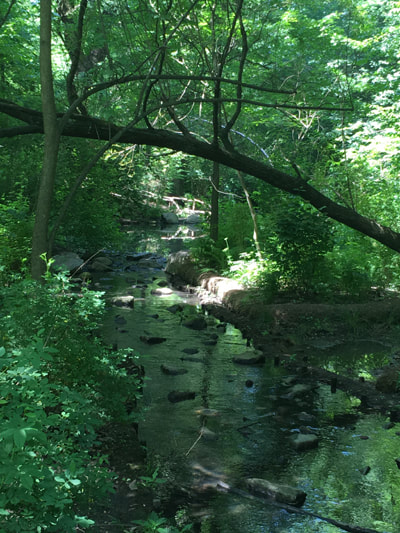|
by Deborah Harley I decided to take a walk through Central Park’s North Woods the other day. I knew the Central Park Conservancy had completed a renovation of the area and was curious to observe the results. My reaction was “Wow!” If you haven’t been there lately, you are overlooking what I feel is the most spectacular landscape of the park. For one, the Conservancy has widened the Loch, the rivulet that runs through the woods, and restored it nearer to the size that Olmsted and Vaux had envisioned. It had dwindled to a thin stream over the decades. The Conservancy has also added natural paths that allow you to wander closer to the water and deeper into the woods for a more immersive experience. The North Woods is a unique landscape in the park, and Olmsted and Vaux designed it with a particular purpose in mind. During the mid-19th century, several influential cultural movements were introducing some radically unfamiliar ideas into the American consciousness. These included a new emphasis on the value of each person, a more profound appreciation of nature, and an increased ethical awareness. It was the time of the Romantics. Central Park was a product of these times, and its builders incorporated these new values and ideals into its design and construction. As the first built public park in the United States, everyone – whether rich or poor – was welcome. Nevertheless, the lower classes were the key beneficiaries of the park’s underlying egalitarian philosophy. For example, Vaux and Olmsted designed the North Woods to resemble the Adirondacks in upstate New York. As wilderness country, the Adirondacks became a popular destination for the wealthy seeking to escape the city. The upper class could travel there whenever they wanted, because they had the time and the means. The lower classes, however, had neither – especially considering they had only one day a week off, if they were lucky. Their lives were limited to the crowded confines of Manhattan, living and laboring under appalling conditions. Therefore, Vaux and Olmsted provided the lower classes with their own Adirondacks. Now even the poorest New Yorkers could experience nature – some for the first time in their lives. Central Park offered them a chance to walk through the woods, to breathe healthy fresh air, and to enjoy all the benefits that nature had to offer. For the Romantics, those benefits meant nothing less than a complete revitalization of one’s body, soul, and spirit. Think about this. Central Park was not built for the wealthy. It wasn’t built to make someone rich, inflate an ego, or build a reputation. It was built for all New Yorkers to enjoy, and through that experience become happier and healthier. This was a radical idea. How lucky we are that we can still experience this in the same way as New Yorkers did 150 years ago. Do yourself a favor. Take a walk in the North Woods and be refreshed. Come on our tour Central Park: Marvels of the Northern Half. We offer it often on our public tour schedule, or contact us to book a custom tour that fits your own schedule. Comments are closed.
|


